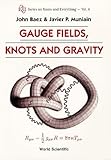Leverage what you know against what you don't. You remember how to find an extremum of a function from Cal 1? The first order necessary condition for an extreme point is that the derivative of the function be zero. Remember that when you get to (deterministic) optimization and a gradient needs to be zero. Next with a constrained optimization you will see the reformulation of an objective function and constraints into one functional by using new variables (Lagrange "multipliers") so that when the gradient of this new functional is zero, not only are you somewhere in the intersection of the constraints and the objective, but you also meet the first order conditions necessary for an extremum to be found. (Second order sufficiency conditions (SOSC) are needed to show that you aren't instead at an inflection point but we are moving fast and breaking things)
Hmm, I didn't say that very well, but there is much intuition to be found in optimization problems. This will serve you well in physics.
Calculus of variations: Nail down cold how to derive the Euler Lagrange Equations for a functional. Hint, Apply the FONC (first order necessary conditions for an extremum) to the functional (now the Action) in question. See Lanczos "Calculus of Variations" (Dover Books) to sort out your initial questions and learn the smooth little trick with integration by parts. Susskind's first book comes in here.
Learn cold the integral of the Gaussian distribution and how to play around with it to find more complicated integrals. Orthogonality. Dot products and Fourier transforms have a lot in common! Fourier's trick is crucial. Oh man... have you got some fun in store here. Do not proceed to Quantum mechanics without having these tools at your disposal. Otherwise QM is just linear algebra over complex numbers together with complex amplitudes from circuits/naval architecture/ spring mass dampers in the frequency domain. (I mention all of these to raise awareness that complex amplitudes are not unique to QM) Supplement Susskind's second book with Griffiths intro QM book. Also see Griffeths E&M book for a great explanation of Fourier's trick and separation of variables in the chapter on special techniques... At least in the 1999 Third edition. (beware, it falls apart under little abuse!) Oh, and pick up the power series methods for solving tricky differential equations - don't learn it from the physicists. Learn it from "advanced differential equations materials". It's not bad in isolation - soon you will be computing recusion relations and bessel functions.
Soon it will be time to start thinking about field theory. A side quest is available if you want to get into fluid dynamics. Incidentally this is a great way to learn about uses for Green's functions... And if you dive deep, your first look at singular integral equations in field theory. But we will proceed dead ahead... to the book reviews (you will need more than one book):
https://fliptomato.wordpress.com/2006/12/30/from-griffiths-t...
https://www.susanjfowler.com/blog/2016/8/13/so-you-want-to-l...
Somebody else plugged 't Hooft here http://www.goodtheorist.science/ But there it is again. Now is a good time to speak of renormalization: There is an intro book out there: https://www.amazon.com/Renormalization-Methods-William-David...
It's okay but I have yet to derive more utility from it than from various field theory books. Oh and studying complex singular integrals in isolation is good too. Generally have some experience with contour integration around singularities.
See Sydney Coleman on symmetry breaking. (Man in the magnet, flip the sign of a term in your potential to get a mexican hat, see that the ground state is now different etc.)
There are tons of free resources out there for learning QFT. Use many sources. Expect to get stuck with any one of them. Bounce between them to un-stick.
Next up, differential geometry, tensors, and GR.... Google is your friend. I like Schutz's "a first course in general relativity" and really like Zee's Einstein Gravity book but I am working into this now and so my recommendations are running out. Check out this video as an intro to GR: https://www.youtube.com/watch?v=foRPKAKZWx8
To be inspired/get prepared for things to come get John Baez's Gauge-Knots_Gravity book: https://www.amazon.com/GAUGE-FIELDS-KNOTS-GRAVITY-Everything... and maybe Penrose's Road to Reality - which is like cosmology if the universe consisted of all the math and physics needed to understand all this math and physics. Baez's book probably has more exercises and is more focused in general. Stuff like this will help you see where more advanced mathematics comes in. By now you will be seeing manifolds and fibre bundles. Think of parameterizing a surface instead of a curve and see how a tangent bundle describes a whole new vector space - one vector space for every point in the manifold. Yang Mills... internal symmetry... ok I'd love to talk about how these are new expressions of ideas we've seen before but at some point up there we've passed my pay grade, I have to beg off until I can learn some more!


I can recommend a book on topology though. Robert Ghrist’s book:
https://www.math.upenn.edu/~ghrist/notes.html
Do you like physics? If so maybe try John Baez’s book for more knot-centric inspiration:
https://www.amazon.com/GAUGE-FIELDS-KNOTS-GRAVITY-Everything...